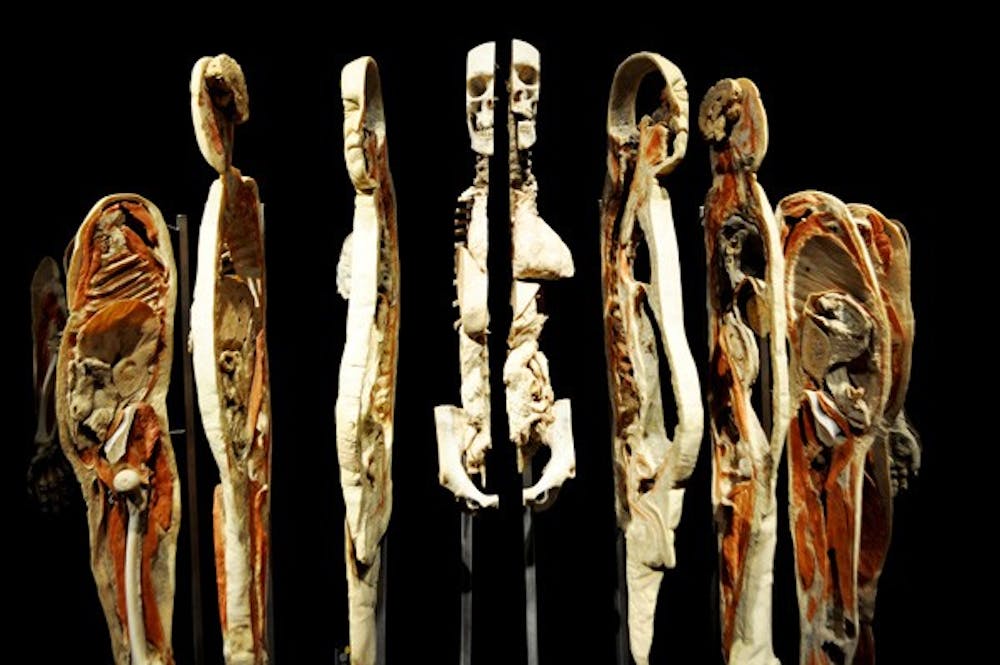Seeing human brains is no longer reserved for doctors and coroners.
The famous Body Worlds exhibit is back at the Arizona Science Center, this time showcasing the brain and the effects that it has on the body.
The exhibit re-opened Friday at the Arizona Science Center in downtown Phoenix, three years since its last showing in Arizona.
Created by Gunther von Hagens, the exhibit is called “Body Worlds and the Brain,” and gives the viewers a look into how the brain works with the body. The exhibit contains more than 200 body parts, body systems and preserved bodies, all of which are donations.
Video by Samantha Cary
The bodies are transformed into plastinates through the process of plastination after the death of the donor.
Plastination is a method that stops the decomposition of a dead body. The process includes removing all of the fluids from a body about two to three days after the donor has died. The body is dipped into acetone and silicone to preserve the muscles and bodily systems inside, and is eventually cured with a heating process in its final posed position.
Each of the displays in the Body Worlds exhibit looks at the body from a different angle. Displays include a focus on the nervous system, the effects of smoking on the body and the stages of pregnancy.
“It’s a unique opportunity to enhance people’s understanding of themselves,” said Chevy Humphrey, president and CEO of the Arizona Science Center.
The exhibit looks into ailments that affect the body, such as Alzheimer’s disease and cancer. Bodies in the exhibit are posed to show how different activities, like those of a ballerina or baseball player, can benefit the body’s muscles.
“I’m going into the medical field, so I liked it,” said Ally Zepada, a physical therapy junior from Allan Hancock College in Santa Maria, Calif. Zepada visited Arizona to explore the possibility of transferring to ASU.
Everything in the exhibit comes from real human bodies that were donated to science for the cause. Forty bodies in the current exhibit are from Arizona donors.
More than 32 million people across the world have seen this exhibit, which continues to wow people who are curious about the human body.
“I think it’s really fascinating that people get to see the inner workings of the body,” elementary education sophomore Breanne Cunningham said. “It’s something most people don’t get to see unless they are involved in medicine.”
The exhibit will be at the Arizona Science Center until May 30. It will be open from 10 a.m. until 5 p.m. daily. Admission is $25 for adults, and $23 for college students with identification.
Reach the reporter at mdparret@asu.edu





